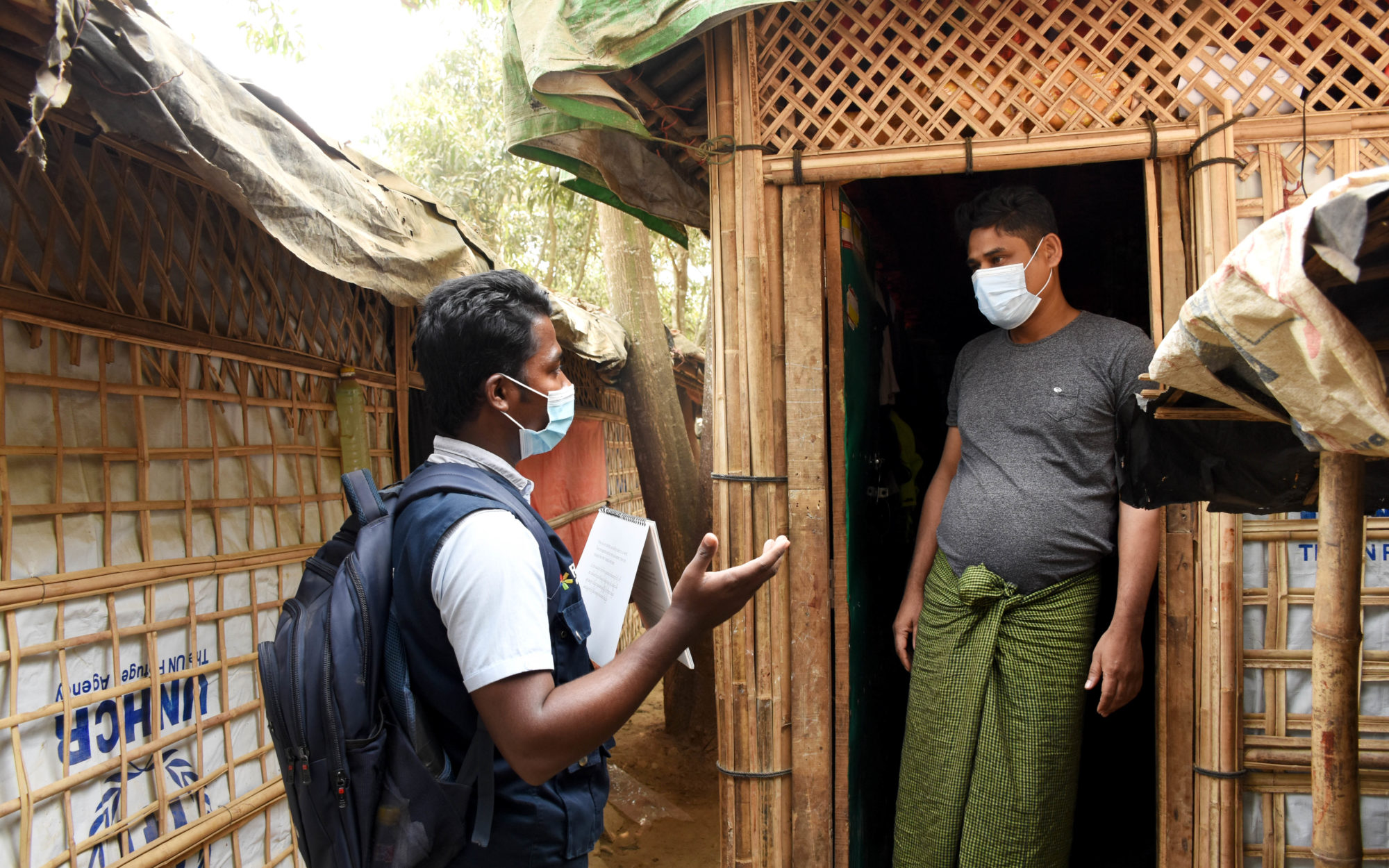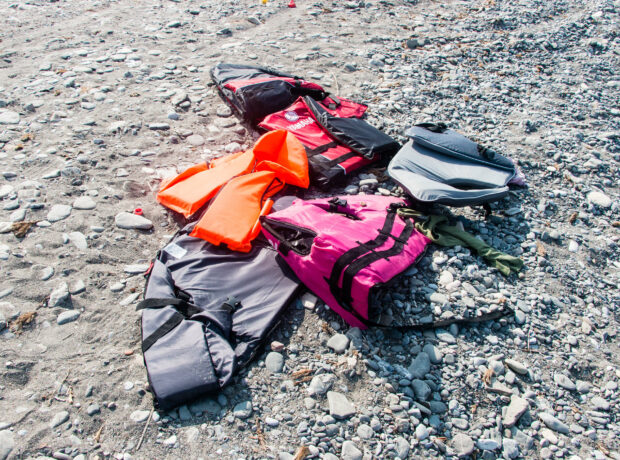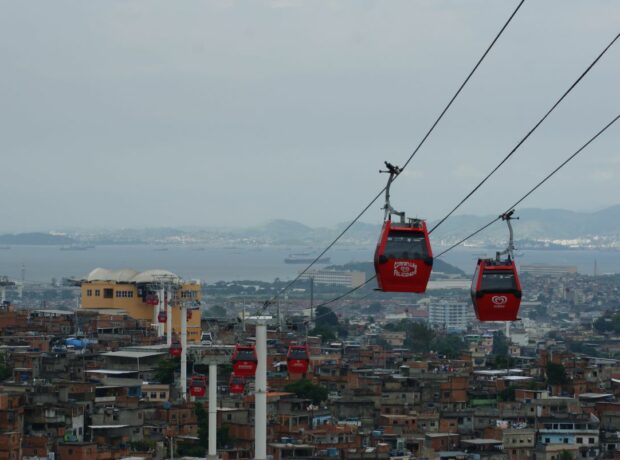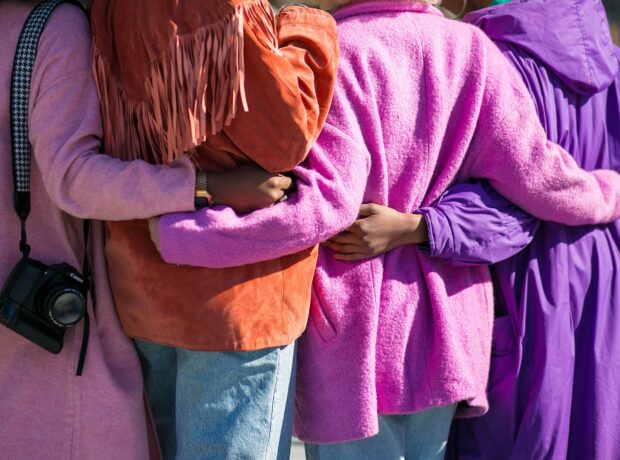How do you convey vital health messages when the terms simply don’t translate? With the extra pressure of an internet blackout in Rohingya refugee camps, Jennifer Chance finds organisations such as Translators Without Borders are carefully considering local dialects and biking across the camps with loudspeakers.
Hasan, a Rohingya refugee, recalls there was confusion in Bangladesh’s refugee camps at the beginning of the pandemic.
“We didn’t know what to do,” he says. “In our culture, we depend a lot on the stories told by our elders, but this was a new situation. No one had stories about Covid-19 as no one knew what it was.”
In early April 2020, the government imposed a complete lockdown in Cox’s Bazar district, home of 34 refugee camps. NGO presence was slashed by 80%, making it increasingly difficult to reach refugees with information and support.
In late 2019, the Bangladeshi government also instituted an internet ban and phone restrictions for the refugee camps as a “security measure”, further hindering communication efforts during the pandemic.
Language barriers, lack of NGO presence and the internet ban in refugee camps meant that good information was hard to come by. As a result, the first reaction towards the virus was nonchalance. Community responses were linked to their religion and the belief that they would not get sick.
“Nothing will happen to us… Allah will save us.”
There are almost 900,000 refugees in Bangladesh as of March 2021 and the camps in Cox’s Bazar are some of the most densely-populated in the world, with up to 10 family members living in a single room.
This makes it nearly impossible to adopt social distancing.
Access to health services, despite NGO efforts, is lacking. As a result, hygiene and sanitation are significant problems even in the best of times.
Read more: The defiant Rohingya of Bradford
May 2020 saw the first case from a refugee camp. After the virus began spreading more rapidly, refugees started seeing people being taken to isolation centres.
At this point, rumours and fear began to spread. By June 2020 – the peak of the pandemic in Bangladesh – a majority of the refugees avoided getting tested because they worried they would be detained or killed. As a result, among the 900,000 residents, only 339 tests were conducted – and of those 9% tested positive.
“Rohingya have seen people or those who tested positive taken to isolation centres. This led to several rumours which affected the community and their way of thinking. Some rumours were so serious it made people stop visiting clinics and hospitals, as they heard that if they test positive, they will be taken far away from their families so that they cannot spread the virus,” says Pearly Luthfun, a research officer with Translators Without Borders.
The scarcity of factual and well-translated information surfaced as a significant hindrance to pandemic prevention efforts.
Translating to refugee communities
Even in the digital age, where a push of a button can translate a phrase into hundreds of different languages, the nuances of dialogue cannot always be captured by computer-generated translations.
There may be a lot of similarities between Rohingya and Chittagonian (a nonstandard form of Bengali), but the small details matter. Misusing certain terms or words can heighten refugees’ distrust in both the speaker and the information being shared.
The job was therefore more complicated than simply translating a language – NGO researchers needed to understand the jargon.
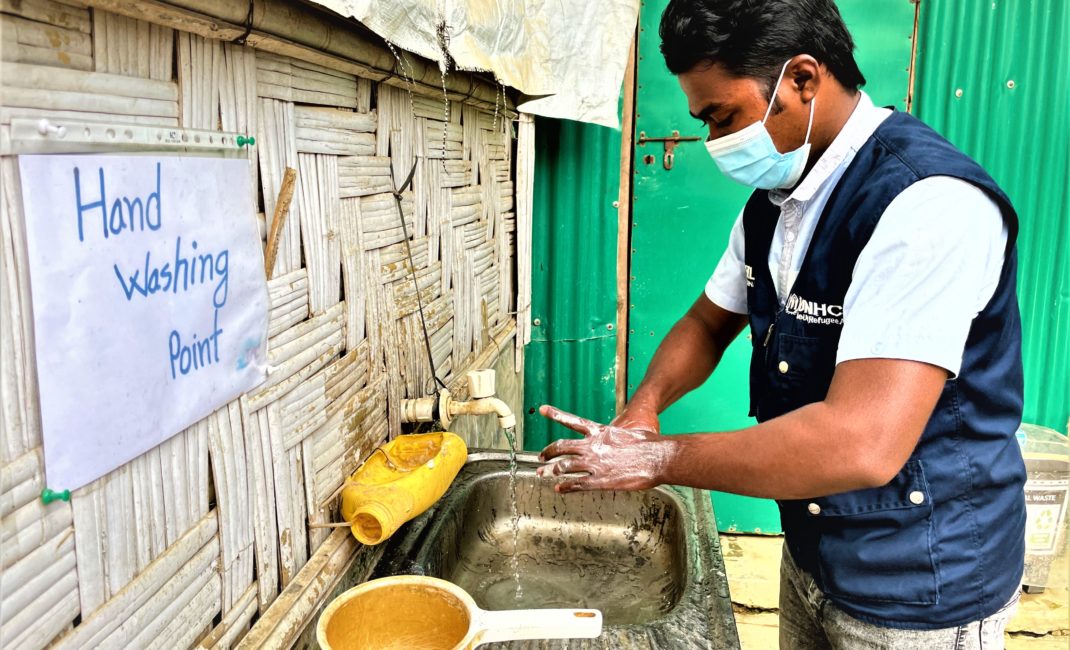
Mohammad Jaber, a UNHCR Covid health volunteer in Rohingya refugee camps
Rohingya speakers, for instance, would use “coronavirus” or “virus” to refer to the pandemic, but the new term “Covid-19” would not generally be understood.
“Social distancing” was vague and would require being translated into “one should keep a distance from others”.
Words like “hand sanitiser” also did not exist, and speakers would have to use the Rohingya expression for “medicine to cleanse hands”.
To assist NGO and community volunteer efforts, Translators Without Borders compiled a language guide to ensure that helpers could effectively communicate information which could save lives.
Other NGOs such as IOM (International Organisation for Migration) and UNHCR prepared recorded messages and videos containing translated Covid-19 information.
Rising Up
When Hasan heard the translated messages compiled by researchers and NGOs, he wanted to make sure the rest of the community had access to the same information.
During the peak of the pandemic, Hasan spent every day cycling across the camp with a loudspeaker.
“In the beginning, some people thought it was crazy,” he says. “Tom toms [horse carts] have a hard time accessing the camp’s narrow alleys, but with my bicycle I was able to reach everyone, even those who couldn’t leave their shelter because of age or medical condition.”
The messages played over the loudspeaker were recorded in Rohingya and spoken by a Rohingya person, which improved confidence in the quality of the information.
“[The refugees] felt that the messages were coming from within the community and not told by an outsider. Kids would even run up behind me and repeat the words heard on the loudspeaker,” says Hasan.
Mohammad Jaber, another health volunteer who is affiliated with the UNHCR, lives in Cox’s Bazar and uses resources such as flipcharts and videos to appeal to the local community.
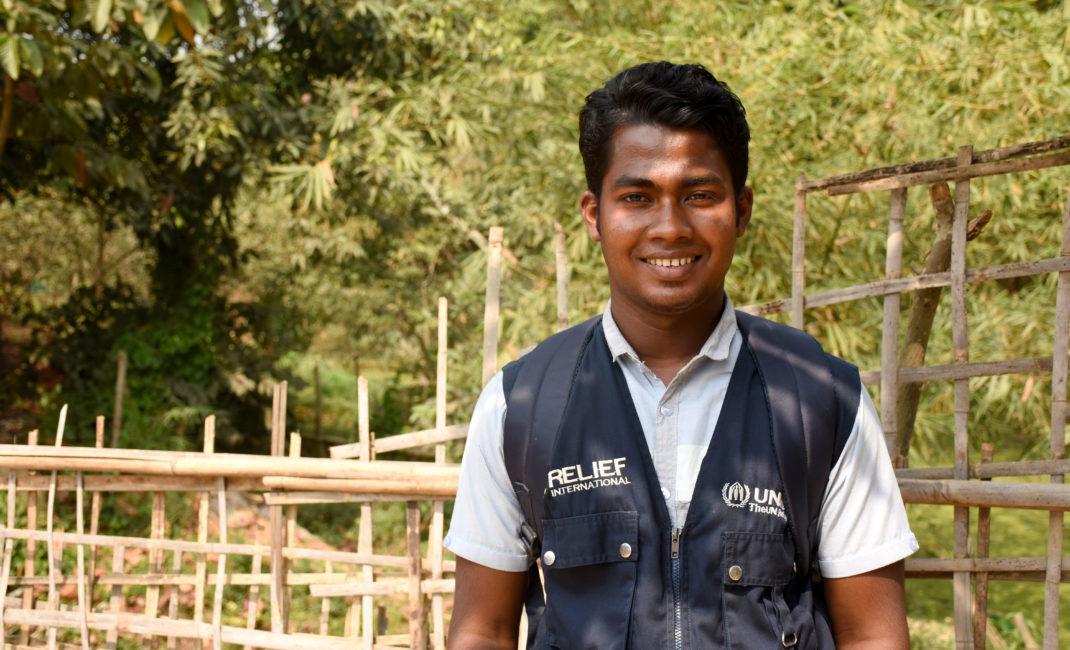
Mohammad Jaber, a UNHCR Covid health volunteer in Rohingya refugee camps
“We have demonstrated handwashing methods, social distancing techniques, and other health habits to follow while cooking and dishwashing during household visits,” he says.
He visits 20 households every day to conduct group sessions on Covid-19. When he finds people exhibiting Covid symptoms, he refers them to the health centre.
Both volunteers have found that people in the refugee camps have gradually become more receptive to Covid prevention messages.
At the same time, while the efforts may have combatted misinformation and resulted in higher testing in the following months, there is still plenty of room to grow. Without the internet, the NGOs and local communities have had to resort to a manual awareness-raising process, and this means that there is a loss in efficiency that may hinder the timeliness of the information.
The number of positive cases has been low in Bangladesh’s refugee camps, which may be linked to the low levels of testing. In March 2021, only 432 refugees in the Cox’s Bazar district are confirmed Covid cases. The World Health Organization has only collected 30,000 tests from Cox’s Bazar since March 2020, a small proportion of the almost 900,000 Rohingya.
Read more: GALLERY – The human and environmental toll of mass Rohingya migration
Door-knocking and sharing health information with technology has further supported these efforts but it may still be insufficient. And because of the dynamic nature of the virus, the approach may need to be updated and new information spread again and again.
Jaber says that the current lack of cases may be driving complacency in the community again, even though the need to remain vigilant remains high.
“Not everyone is very serious about the Covid-19 in the camps since the rate of infection is not very high. Many people tend to ignore the health habits…I always encourage people to follow health measures to keep themselves and others safe and healthy.”
A ray of hope?
Vaccine rollouts have begun in Bangladesh in late January, and the government has expressed willingness to provide vaccines for Rohingya refugees.
Last month (February 2021), the government of Bangladesh released a draft proposal and budget plan with the WHO regarding the Rohingya crisis. This report confirms the country’s willingness to include refugees in national vaccination strategies.
The proposal, however, has not been finalised and does not have a set timeline. This means that there is still uncertainty over when the rollout will come to pass – or whether it will end up happening at all.
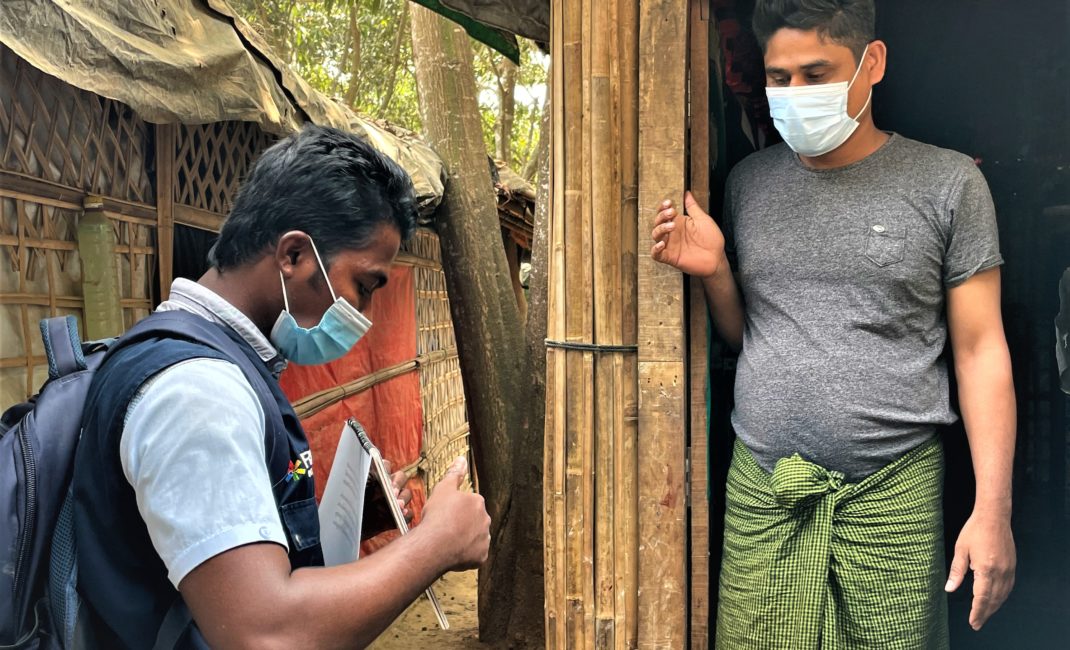
UNHCR volunteer, Mohammad Jaber, delivers Covid-related advice in Rohingya refugee camps
The process of coordination and communication between the government and the camps, is also patchy at best and may hinder the success of these programs.
A Refugees International report states that the government’s communication with the refugee community “has been limited to poorly coordinated, last-minute information campaigns”. This, coupled with the internet ban, will form a serious obstacle in rolling out the vaccine.
NGO translation efforts have surely alleviated matters, but these translations only go so far if there is not enough information being made available to the community leaders in the first place. The lack of official NGO presence may also result in complications with coordinating and monitoring the logistics of vaccine rollouts.
In this recent article in The Diplomat, writers and researchers Simon Tran Hudes and Kyra Jasper explore these concerns, stating that the Rohingya refugees “risk being forgotten” in the vaccination drive.
Still, the Rohingya people remain hopeful about the potential of a vaccination programme for refugees and Jaber believes it would be welcomed by the camps’ residents.
“I heard people talking about the vaccine… whether there will be any vaccination campaign in the camp or not, and so on. Someone asked me to inform him if there is any vaccination opportunity,” he says. “They are interested to keep themselves safe.”
Read more:
